- dragonfly (anisoptera meaning unequal wings) are larger and very much more obvious when you see them flying around.
- damselfly (zygoptera meaning equal wings) are normally quite small, and if you are not looking out for them you can easily walk right by without seeing them at all.
Having written an article about differences in one Dragonfly species, Pincertails, I am going to cover a genus of Damselfly which has 3 species in France, the Featherleg.
Damselflies are dainty insects. Featherlegs measure about 30 - 35 millimetres long overall, and their abdomen is only just over 1 mm thick. So certain parts of the body from which positive identifications can sometimes be made are very small - indeed some of the details on the pronotum (see further on) measure about one tenth of a millimetre across. In itself this presents useful photographic challenges (particularly as in getting my photos I never disturb the insect any more than possible, and never catch them).
The Featherleg (Platycnemis) forms in France are
• White (P.latipes/L'Agrion blanchâtre)
• Blue (P.pennipes/L'Agrion à larges pattes)
• Orange (P. acutipennis/L'Agrion orangé)
I used to live in South East France, not far from the Spanish border. The nearby River Tech provided a breeding habitat for damselflies, as well as the many lakes and disused gravel pits.
Until recently I had thought that all three species were resident in that area, and I was having a lot of difficulty in determining which was which in my photo library, especially some of the females. I then looked more closely at a map in "Les Libellules de France, Belgique et Luxembourg" by Daniel Grand and Jean-Pierre Boudot - and life became easier. For some reason (unknown), in this South Eastern corner of France, the Blue featherleg is absent from Pyrénées-Orientales and rare in Aude. Thus the Orange and White forms are almost certainly the only ones I have been seeing. (At the same time one has to be aware that there just might be individual vagrants of the Blue form flying in from neighbouring areas).
So here are the 2 species this article is about -
Superficially there is not a lot of difference between the males, except for the colour of the abdomen. However the females are very alike and, as always, the devil is in the detail!
Before going any further, lets look at some of the basic parts of a damselfly's anatomy.
The Latin word Platycnemis comes from the Greek "platos" meaning flat and "cnernis" meaning shin. The tibia of the hind leg is wide and flat, more so in the case of the White Featherleg than the Orange, and all the legs have hairy bristles giving a somewhat feathery appearance.
There are a number of details of the insect's body from which one can make a positive identification. Thorax, abdomen and legs are all useful, although more so collectively than individually. In the case of females, the pronotum at the front of the thorax will give a positive ID, but it needs a very clear view, in good focus, as it is so very tiny (more about this later).
Featherlegs often have a double stripe running along the side of the thorax - the antehumeral stripe. While this feature is diagnostic of a featherleg, it is not always present.
White Featherleg male (Platycnemis latipes)
Female appendages are contained in the swollen end of the abdomen.
When mating they often form into a heart shape, which is quite charming -
Males of the two species are separated by their colour when they are mature; females tend to be similarly coloured and can be distinguished by features of their pronotum (see below).
Male Featherlegs
The typical male White featherleg has a white abdomen, often looking porcelain-like or translucent.
Looking more closely at the legs it can be seen that the White has got broad, flat tibias
Whereas the Orange has tibias that are quite a bit less broad and flat.
Male Whites have a stripe running down the middle tibia which extends about one third of the way; this stripe is usually absent from the hind tibia.
White Featherleg male tibia (Playtcnemis latipes)
The Orange has a stripe on the middle tibia which goes all the way down, and one on the hind tibia that goes about half way down. These features are diagnostic of the male (females are different)..
Orange Featherleg male tibia (Playtcnemis acutipennis)
The eyes of all featherleg species, both male and female, are widely spaced. In the case of males they are an attractive blue colour.
White Featherleg male (Platycnemis latipes)
Female Featherlegs
The females are harder to tell apart. Although the typical Orange female often has a darker coloured abdomen, this is not always so as the colour probably darkens as the insect get older. Immature females of both species are very similar.
The tibias of the female White are not as broad as the male, and in the case of the Orange they are not broadened at all. Unlike the males, the stripes on the tibias cannot reliably be used for identification, although in the Orange the stripes usually go at least half way down the tibia on all legs.
The eyes of both featherlegs are variable, some having blue patches and others being brownish for instance; the colours can look as though they are in layers. Here are a couple of examples.
Pronotum
The most certain way of separating a female White featherleg from an Orange is by carefully examining the pronotum. This is not easy and one has either to be very close or have a detailed photo.
This picture shows the pronotum of a female White featherleg. It is shaped like an inverted "V" on top of the thorax where the front legs join. In this case the colour is light brown, but it can vary and is sometimes black.
The White featherleg's pronotum has a clear lump on the top, is a bit knobbly and has very small bumps on each side at the lower end.
Compare this with the pronotum of an Orange featherleg where, instead of small bumps, there are large spikes (technically "sublateral spines"). This feature may not be very obvious as the distance across the body from spike to spike is only about 1mm; this, added to the relative shyness of Orange featherlegs, makes the getting of detailed pictures quite difficult.
A slight aid to identification can be the flight season. White featherlegs fly from mid-June until late September with the main months being July and August. Orange featherlegs fly from late May until mid-August, with the main months being June and July. These periods are not fixed and can be a week or two longer at either end.
Featherlegs like slowly running water, such as some reaches of the River Tech, although I have seen them on canals.
They are often approachable, especially the Whites which almost seem to enjoy being on camera!
Males like to perch on low vegetation near a river bank, and search for prey and mates with a slow zig-zagging or bouncing flight. Their wide tibias are not used in courtship, but as threatening behaviour to other males of the same species in flight.
Both the featherleg types in this article are found in southern France, the Orange occupying south of a line from roughly the Cherbourg peninsula to Monaco, and the White south of a line from Bordeaux to Monaco.
In this article I am referring only to featherlegs I have photographed on the banks of the river Tech near Montesquieu-des-Albères. In other areas of France they may have slightly different characteristics and may be easier (or harder) to identify.
There is little better than sitting in the shade on a river bank on a sunny day watching the fascinating behaviour of these tiny insects.



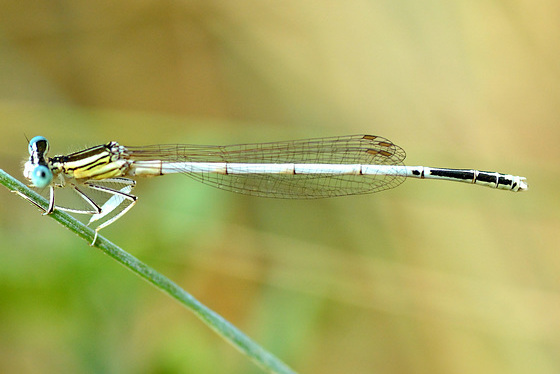
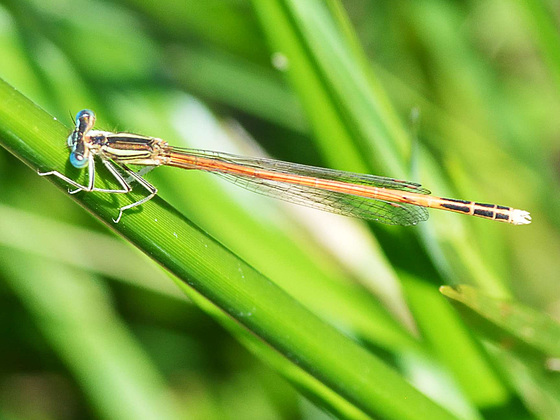
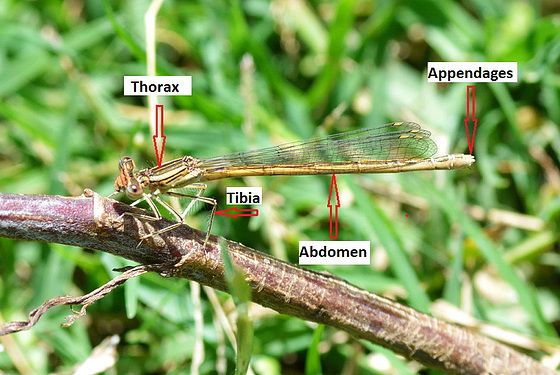

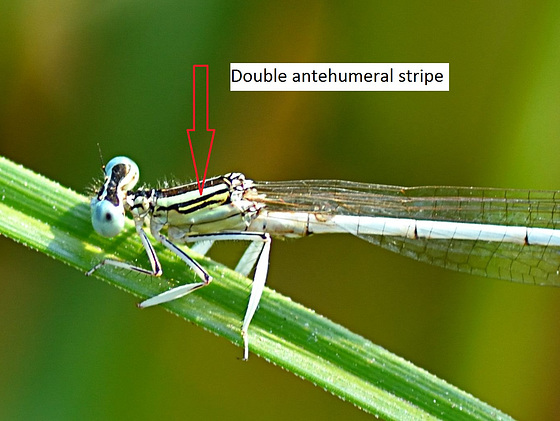

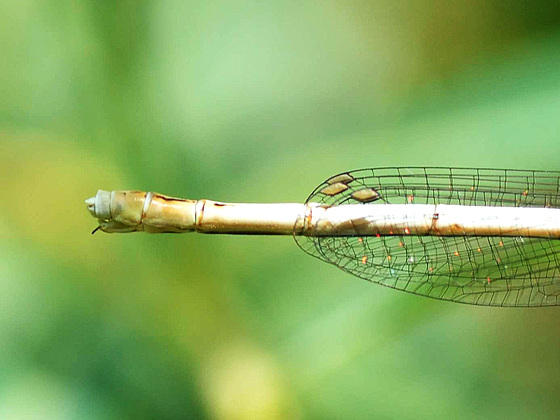

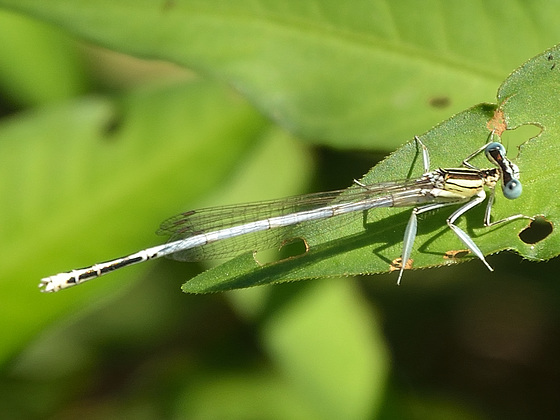

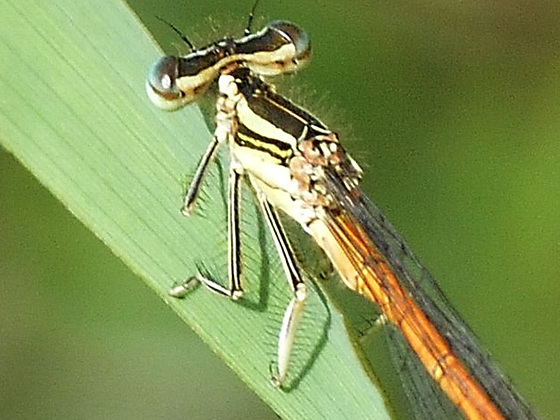
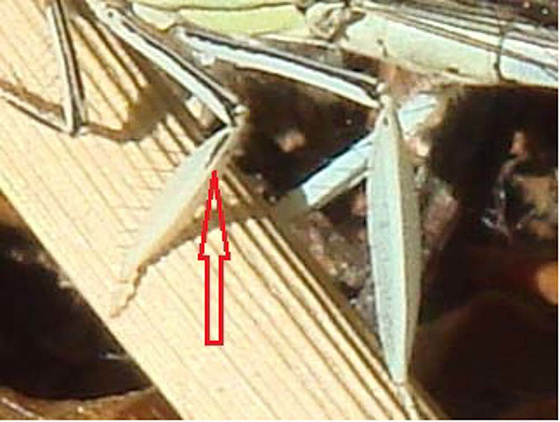

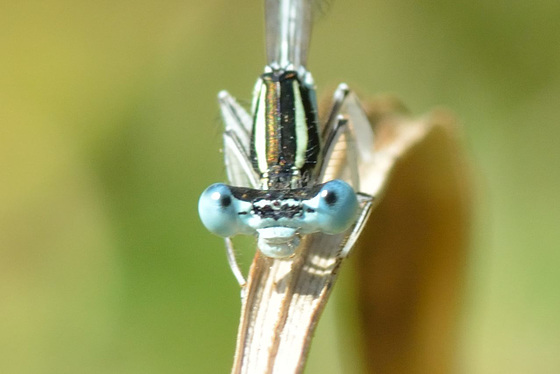

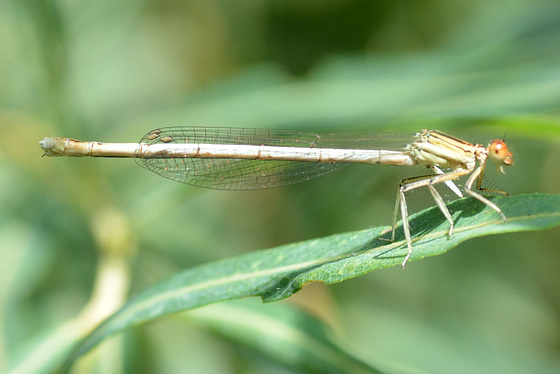
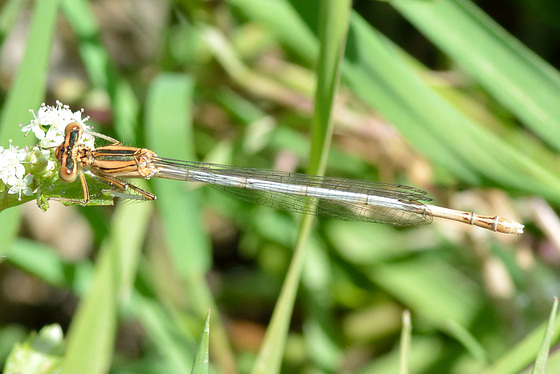


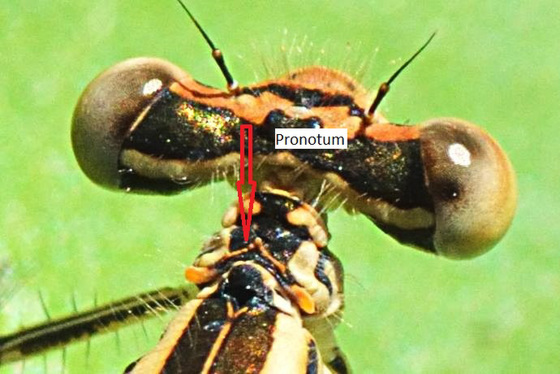
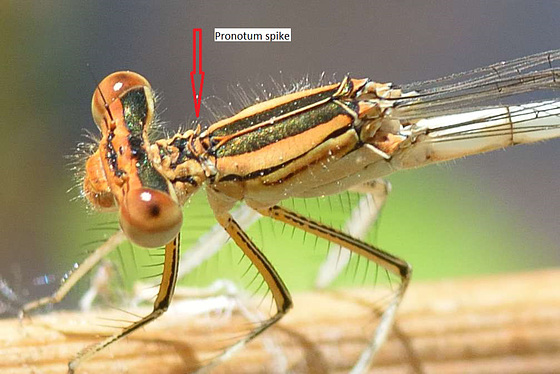
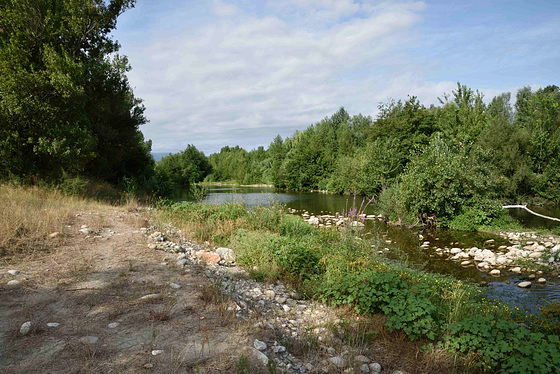
Sign-in to write a comment.